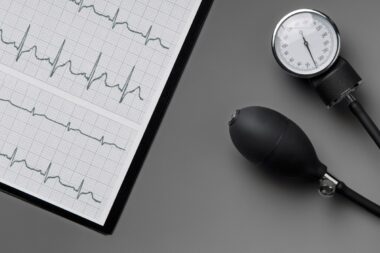An ECG test enables physicians to record your heart’s electrical activity and later on device meaningful interpretations that can help us get a measure of your heart health. Suppose you’re a patient or physician keen on improving ECG report management and learning what it all means.
In that case, this article is for you as we will be uncovering the basics of ECG reports so you can improve data-driven decisions about wellness.
First things first: Confirming accuracy
Before we get into any actual analysis it’s first of all important to ensure that all the patient details are correct and that the EKG is actually for the desired patient. Otherwise, we may have to deal with a case of misdiagnosis.
In terms of what actual details are often checked at this time, they primarily include:
- Time
- Date
- Date of birth
- Hospital name
- Patient name
In some cases, you may find that a patient might need multiple ECGs and, in this case, it’s also important to take note of the serial ECG numbers. This will help us to establish the right sequence as we go about proper ECG report management.
Determining heart rate from the ECG
So what’s the secret on how to calculate heart rate by ECG? How do you convert ECG to heart rate? Well, this is a fairly straightforward preliminary step, and it is very essential because a heart rate can help tell us if a patient is suffering from bradycardia or tachycardia before we can delve deeper into the data to uncover the exact nature of the arrhythmia.
That said, to calculate heart rate you simply need to count the number of large squares between consecutive R waves. Then you can divide 300 by the number of squares you got and this should give you the patient’s heartbeat per minute.
Of course, a normal heart rate at rest should be anywhere between 60 and 100 bpm.
Analyzing the heart rhythms
Now, we move on to a more fun part and that’s examining the rhythm. But what exactly is a heart rhythm anyway? Well, it simply refers to the pattern of electrical impulses that your heart generates as it goes about its function.
So here are the steps you can follow when analyzing the heart rhythm:
- Search for the presence of P waves.
- Confirm if these P waves are accompanied by a QRS complex.
- Ideally, you want to ensure that there is a 1:1 relationship between the two aspects above.
If you’ve done this and realized that the QRS complex doesn’t fully correspond to a P wave in a 1:1 relationship or there are no P waves entirely, then it may be time to ask a few more questions.
In this case, you’ll need to determine if there are extra beats, the rhythm’s origin and if the QRS complex is narrow or wide, among a few other details that can help you zero down on an arrhythmia.
If you’d like professional ECG interpretation services to help you get to the bottom of the problem, you can also turn to digital health solutions heavyweights Techindia for assistance.
QT interval & other abnormalities
You also need to calculate the QT interval to determine whether it is within the expected range. It’s important to note that the interval can vary slightly in men and women, so it’s important that you take into account the patient’s gender.
That said, this is the formula that you can use to calculate the QT interval:
QTc = QT / √RR
Additionally, you should also be examining the ST segments to determine the nature of the depression and elevation. The T waves and how they look in relation to their normal shape will also be a key piece of information, just analyzing other patterns in your QRS complex will be.
Deriving a diagnosis
It’s now time to put it all together, and here’s what your ECG report may look like
- Rate: 66 to 80 bpm
- Rhythm: X rhythm
- Axis: Normal
- P waves: Describe the PR interval, nature of morphology and they were present
- Q waves: Did you find any pathological Q waves? Note it here as well
- QRS complexes: was it narrow or wide
- ST segments and T waves: Take note of T wave variations and ST deviations
- QT interval: Write down the duration of the QT
- Conclusion; Finally, conclude the type of suspected arrhythmia, if there is one
Although we haven’t covered all the steps comprehensively, that’s basically how most ECG interpretation services analyze ECG reports to make more informed decisions about heart wellness.
Outsource ECG Data management to Techindia
ECG data management can be tireless work, sometimes requiring round-the-clock monitoring which is both time and effort-intensive. Additionally, it’s also possible for ECG misinterpretations to occur, which can compromise the integrity of the report.
To avoid all that, you may need to outsource your ECG report management needs to Techindia. Armed with over 21,000,000 hours of ECG scoring, they can help you get highly accurate ECG reports quickly so you can make heart health interventions more reliably. Visit their website now.
Image Credit: Freepik
This article is published by our independent team of health and wellness pundits that publish original and informative content to empower readers to take charge of their health and embark on a physically, mentally, and emotionally balanced lifestyle.





































